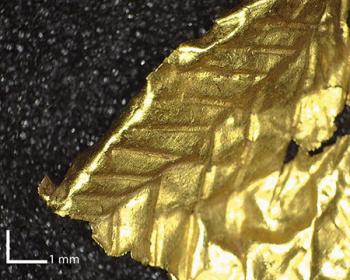American Journal of Archaeology | The Journal of the Archaeological Institute of America
You are here
Heterogeneous Production and Enchained Consumption: Minoan Gold in a Changing World (ca. 2000 BCE)
July 2021 (125.3)
Heterogeneous Production and Enchained Consumption: Minoan Gold in a Changing World (ca. 2000 BCE)
Early and Middle Minoan goldwork has sparked numerous studies, with particular emphasis on possible foreign influences and the role of gold in the development of social hierarchies. This paper contends that the value and uses of gold can only be understood in connection to the broader organization of production and distribution. Through a biographical approach, we focus on the high-resolution study, including chemical and microscopic analyses, of 90 samples from gold assemblages found at Mochlos, Sissi, and Hagios Charalambos. Our results show that beneath the apparent simplicity in designs and techniques, there is a variety of technological choices and skill levels that are suggestive of the involvement of multiple hands. Our technical analyses reveal objects with long life histories of uses, reuses, and repairs, as well as instances of deliberate fragmentation through cutting, tearing, or separation of object parts. With complex life histories of shared production, curation, reuse, fragmentation, and recontextualization that did not conclude with burial, gold artifacts connected the dead and the living in a way that strengthened predominantly horizontal relationships. This evidence should therefore be considered in discussions of the emergence of social complexity. Our approach shows promise for studies of life histories of metalwork elsewhere.


